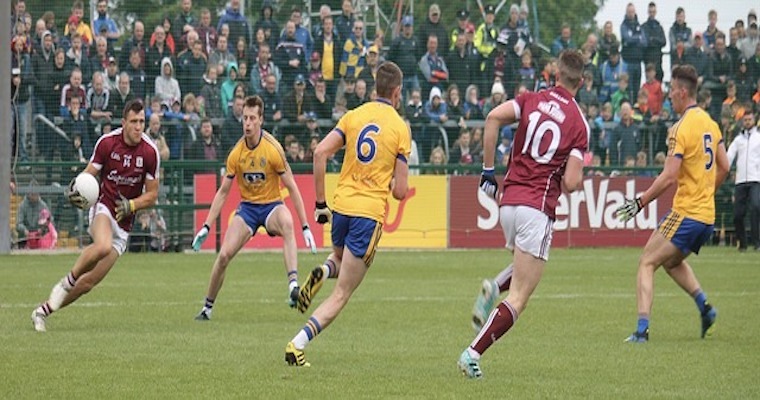
Gaelic football players play an amateur game – Gaelic football – however, it belies the gargantuan commitment to train and compete at an inter-county level. Skills training, physical conditioning, sports nutrition, mental preparation and getting enough sleep and time to recover mean a logistical structure is vital to fit in these necessary components around a job or university degree. Travelling to and from training alone is a time commitment often straining the dwindling resources of an inter-county Gaelic footballer.
When we compile these various demands, we must acknowledge the demands on body and mind of the footballer. Because Gaelic football is a sport with high physical contact elements, played at high velocity with players travelling in all directions on the pitch, we can expect a risk of injury. The accumulated demands for amateur players mean that it could be possible to estimate how likely these Gaelic players are to get injured in the future.
In an investigation performed at University College Dublin, John Murphy Edwenia O’Malley, Conor Gissane, and Catherine Blake described how often and the nature of sport-related injured in elite male Gaelic football players across four consecutive seasons.
Between 2007 and 2010, 851 football players took part in the study. The team physiotherapist submitted all the data to an injury database. They recorded 1014 Gaelic football injuries. There were 4.05 injuries for every 1000 hours of football training. What’s most intriguing is that the injury rates for matches were 61.86 for every 1000 hours. Muscles were the most frequently injured tissue, accounting for 42.6% of injuries and fractures accounted for 4.4 % of all injuries. Most of these fractures were in the leg. The most common injury overall was hamstring injury. Almost 1 in 4 of all injuries were injuries to the hamstring. Hamstring injuries accounted for over half of all muscle injuries.
One injury that is quite devastating for Gaelic footballers is an anterior cruciate ligament (ACL) injury. Such injuries accounted for 13 percent of knee injuries. 75% of all injuries were defined as new injuries with 23% were recurrent injuries. Almost 60% of injuries during matches occurred in the second half of the game. 86% of injuries caused over one week’s absence from play. In comparison with soccer, Gaelic football match play risk is greater but less than rugby union injuries.
At least three key findings emerge when we try to make sense of these research findings. First, in percentage terms, Gaelic football players are almost 15 times more likely to gain an injury during a match compared with a training session. Second, those injuries are most likely to occur during the second half of the match. And finally, hamstring injuries accounted for a quarter of all injuries. When we examine these findings, we can see valuable take home messages for players, trainers, coaches, sport psychologists and sport injury specialists. At first glance, attention to strength and flexibility training is critical to lessen hamstring injuries throughout the playing season. The physical and psychological conditioning necessary to prevent injury and re-injury ought to be a priority for players and backroom staff. Finally, since these authors conducted the research over a decade ago, we can surmise that the demands of Gaelic football training and matches has most likely risen and the sincerity of these messages takes on greater purpose.
Reference
Murphy, O. (2012). Incidence of Injury in Gaelic Football: A 4-Year Prospective Study. The American Journal of Sports Medicine, 40(9), 2113–2120. https://doi.org/10.1177/0363546512455315
Image by Shane Tighe from Pixabay
